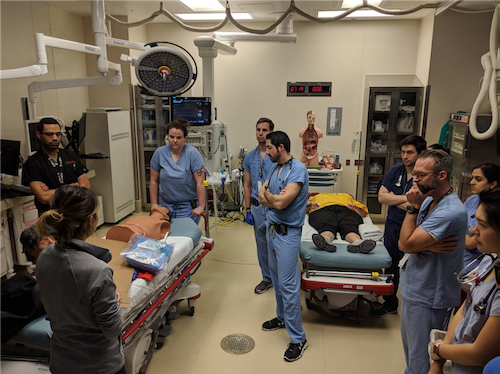A new study from UT Southwestern shows how simulations can positively impact lifesaving trauma interventions. The medical center is home to one of the largest medical simulation training centers in the country, which provides a space for instructors to challenge the decision-making and performance of practitioners in high-pressure situations.

The study showed how response times for resuscitative thoracotomies, which involve opening the chest cavities of patients without a pulse, improved from 14 to three minutes. Response times for tube thoracostomies, which release the pressure of blood filling the chest cavity, also improved from 13 to six minutes.
“What we found most powerful was the ability to recognize life-threatening injuries, to identify the need for and the location of equipment in the trauma bay, and to clearly communicate the plan of action to other members of the care team,” says author Dr. Caroline Park, assistant professor of surgery, via release. “These are basic concepts that can shave off critical seconds, perhaps minutes during a trauma resuscitation.”
The study looked at 277 Level I trauma cases between July 2018 and February 2019, measuring the impact of the training during that period. The findings were published in The Journal of Trauma and Acute Care Surgery.
Other study authors included Daniel Scott, M.D., Assistant Dean, Simulation and Student Integration at UT Southwestern Medical School; Michael Cripps, M.D., MSCS, Trauma Medical Director at Parkland Hospital; Stephen Luk, M.D., MBA, Medical Director of Emergency General Surgery at Parkland Hospital; Kareem Abdelfattah, M.D.; Linda Dultz, M.D., M.P.H.; Ryan Dumas, M.D.; Jennifer Grant, M.D.; and Thomas Shoultz, M.D.




